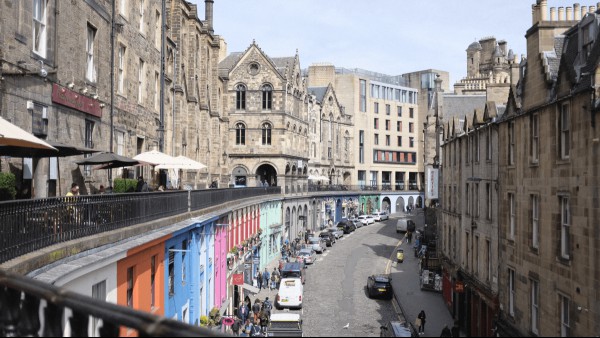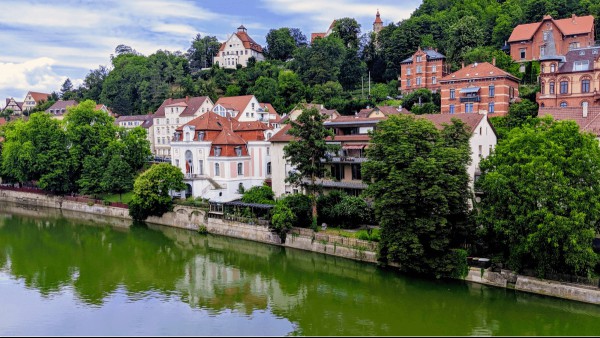When you’re an English speaker learning a new language that uses the Latin alphabet, it’s tempting to just skip right past learning the letters. After all, it looks pretty much the same. The problem is, Portuguese isn’t pronounced the same as English. Tackling the Portuguese alphabet early on in your learning will save you countless mispronunciations further down the road.
Here, we’ll break down the Portuguese alphabet and cover some of the most common letter pronunciations that might give you trouble. It should be noted, though, that Portuguese pronunciations differ depending on where you are, and this guide focuses on standard Brazilian Portuguese.
The Portuguese Alphabet
The official Portuguese alphabet at a glance looks exactly like the English alphabet, but nevertheless we’ll list it here (and you can hear a song version based on the English alphabet song here).
A B C D E F G H I J K L M N O P Q R S T U V W X Y Z
This is the “official” Portuguese alphabet, but it’s worth noting that the letters K, W and Y were only added to it in 2009. This is because they only appear in loanwords and names, so you won’t run into them very often.
In addition to the letters, the Portuguese alphabet also uses diacritics, or accent marks.
À Á Â Ã Ç É Ê Í Ó Ô Õ Ú
The Vowels
While the vowels are only a fraction of the Portuguese alphabet, they’re more than half the battle. It’s worth going through each one and seeing how they differ in pronunciation depending on where they appear.
A
- The letter A without an accent mark is usually pronounced like the “a” in “father.” If it appears at the end of a word, it’s more like the “u” in “cut.”
- a garrafa — the bottle
- a lata — the can
- a sacola — the bag
- When the letter Á appears with a rising accent mark, it’s an “open” vowel, pronounced like the “a” in “after.”
- água — water
- When the letter  appears with the accent mark, it’s a “closed” vowel (the mouth is less open than it is with open vowels). It usually comes before an M or an N, and in those cases it’s also pronounced nasally.
- lâmpada — light bulb
- The letter A is nasal whenever it appears before an M or an N. It’s also nasal when it has a tilde over it, as in Ã.
- também — also
- irmã — sister
- mãe — mother
- The letter À may also appear with the falling accent. This is a sign that two A’s have been combined, and it doesn’t affect the pronunciation. Instead of a aquela (“at that”), for example, you’d just have àquela.
E
The letter E’s pronunciation can vary from region to region, and is one of the more unpredictable vowels. Still, there are some useful rules you can learn.
- When an unstressed E appears at the end of a word or when a word ends with -es, the E sounds like the “ee” in “tree.” This is also the case for the conjunction e (“and”).
- o pacote — the packet
- os ingredientes — the ingredients
- e — and
- When an E appears at the beginning of a word before an S or an X, it has a short pronunciation.
- extrovertido — extroverted
- o esporte — the sport
- In other places, the E has two main pronunciations. The first is the open E, pronounced like the “e” in “met.” If the É has a rising accent, it is always open.
- a festa — the party
- atéja — see you soon
- The other E is the closed E, pronounced like the “ai” in “main.” If the Ê appears with the hat accent mark, it’s always closed.
- a manteiga — the butter
- você — you
- If the E appears before an M or an N, it has a nasal pronunciation.
- menta —mint
- When E is followed by a U, it also changes the pronunciation. If the combination is EU, the two are pronounced separately. If the combination is ÉU with the rising accent, however, they sound like the “ai” in “main” quickly followed by the “o” in “go.”
- Europa — Europe
- o chapéu — the hat
I
- In almost every circumstance, I sounds like the “ee” in “tree.”
- a salsicha — the sausage
- o bife — the beef
- When I appears before an M or an N, it has a nasal pronunciation.
- sim — yes
- o limão — the lemon
- If you see an Í with a rising accent mark, that does not affect the pronunciation of the individual letter. Instead, it shows where the stress in the word goes.
O
- When the O appears unstressed in the last syllable of a word, it sounds like the “u” in “true.” This is also the case for its pronunciation in the definite articles o and os.
- o litro — the liter
- o bolo — the cake
- In most other situations, the O has one of two pronunciations. First is the open O, pronounced like the “o” in “bought.” If the Ó appears with the rising accent mark, it’s always open.
- o pacote — the packet
- o pó — the powder
- The other O is the closed O, which is pronounced kind of like the “o” in “more.” If the Ô appears with the hat accent mark, it’s always closed.
- o chocolate — the chocolate
- o ônibus — the bus
- As with all the other vowels, if O appears before an M or an N, it has a nasal pronunciation. The same is true when the Õ appears with the tilde accent mark.
- onde — where
- relações — relationships
- If the letter O appears before an I, that also changes its pronunciation. When it appears as OI, the vowels are pronounced separately, and the O will sound closed. When it appears as ÓI with the rising accent mark, then it’ll sound like the “oy” in “toy.”
- a noite — the night
- o herói — the hero
U
- In most places, the U has a single pronunciation, sounding like the “oo” in “boot.”
- a fruta — the fruit
- o supermercado — the supermarket
- When the U appears before an M or an N, it’s pronounced nasally.
- um — one
- When the letter Ú appears with a rising accent, it doesn’t affect the pronunciation of the letter, but it indicates the stress in the word.
- There are also many places where U is silent or makes a W sound (as in agua “water”), some of which will be covered in the consonants section.
The Consonants
For the most part, the consonants of Portuguese are straightforward. They are pronounced the same in pretty much every situation, which sets it apart from the more difficult languages (English, for example). Still, there are a few consonants that need special attention.
C and Ç
- When the letter C appears before an A, O or U, it’s pronounced like the “c” in “cut.”
- caos — chaos
- vácuo — vacuum
- When C appears before E or I, it’s pronounced like the “s” in “bus.”
- cerveja — beer
- cidra — cider
- When Ç appears with the cedilla accent mark at the bottom, it’s always pronounced like the “s” in “bus.”
- taça — wine glass
- almoço — lunch
- When C is followed by an H, it’s pronounced like the “sh” in “show.”
- chá — tea
- chinês — Chinese
D and T
- In most situations, the D and the T sound like they do in the English words “dog” and “toy,” respectively.
- A quarta da lista é bonita. — The fourth on the list is pretty.
- Nós mudamos no sábado. — We’re moving on Saturday.
- When D and T appear before the letter I, they have a “soft” pronunciation. D sounds like the “j” in “just” and T sounds like the “ch” in “choose.”
- o dia — the day
- extrovertida — extroverted
- The D and T also may be pronounced softly before an E. If DE or TE are part of the stressed syllable, however, they’re given the harder pronunciation.
- o chocolate — the chocolate (soft pronunciation)
- o teatro — the theater (hard pronunciation)
G
- When a G appears before an A, O or U, it’s pronounced like the “g” in “garden.”
- gás — gas
- guru — guru
- When G appears before E or I, it’s pronounced like the “s” in “pleasure.”
- gel — gel
- gim — gin
- When G appears before the letter combos UE or UI, it’s pronounced like the “g” in “garden” and the U is silent.
- baguete — baguette
H, L and LH
- When an H appears at the beginning of a word, it’s silent.
- hoje — today
- hora — hour
- When an L appears before a vowel, it sounds like the “l” in “loud.”
- falar — to speak
- Lucas — male first name
- When an L appears before a consonant or at the end of a word, it woulds like an English “w.”
- azul — blue
- alto — tall
- When LH appear together, they sound like the “li” in “million.”
- filha — daughter
- mulher — wife
J
- The Brazilian Portuguese J sounds like the “s” in “pleasure.”
- já — already
- hoje — today
QU
- When followed by an E or an I, QU sounds like a “k” and the U is not pronounced.
- quente — hot
- aqui — here
- When followed by an A or an O, QU sounds like the “qu” in “quantity.”
- quanto — how much
- quota — quota
R
- When an R appears between two vowels, or after a consonant and before a vowel, it is slightly rolled. It sounds like the “tt” in “batter.”
- caro — expensive
- Brásil — Brazil
- When R appears at the beginning of a word, it sounds like the “h” in “house.”
- rádio — radio
- A double RR also sounds like the “h” in “house.”
- carro — car
- When R appears at the end of a syllable or at the end of a word, it sounds like the “r” in “car.” In some regions like Rio, however, it may sound like the “h” in “house,” though English speakers may be unused to this pronunciation.
- certo — right (pronunciation one)
- certo — right (pronunciation two)
S
- When an S appears between two vowels, it sounds like the “z” in “zone.”
- vaso — vase
- paraíso — paradise
- In any other position, S sounds like the “s” in “bus.”
- sim — yes
- anis — aniseed
- In Rio de Janeiro and other areas of Brazil, you may also hear S sound like an “sh.”
- festa — party
X
- The letter X is one of the most confusing consonants in the Portuguese alphabet. It can be pronounced like the English “sh,” “s,” “x” or “z.” Unfortunately, there are no rules to tell you which is which, you just have to memorize it. Luckily, it’s not a very common letter.
- xampu — shampoo (like “sh”)
- exemplo — example (like “z”)
- fixo — fixed (like “x”)
- máximo — maximum (like “s”)
Z
- At the end of a word, Z sounds like the “s” in “bus.”
- paz — peace
- In any other position, Z sounds like the “z” in “zone.”
- prazer — pleasure
- azul — blue











